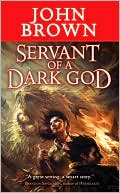by John D. Brown
 The following is part of a continuing series. If you wish to start at the beginning, head to It’s All About The Reader.
The following is part of a continuing series. If you wish to start at the beginning, head to It’s All About The Reader.
In this post, I continue with options for the elements of the struggle phase. I focus here on the progression of trouble through the story.
Each story will feature different types of conflicts and obstacles (as well as different types of help and aid along the way). I can’t find any pattern in the stories I’ve looked at to suggest you must include certain types of conflicts and obstacles. What I can see is that the troubles need to get worse the further the character goes.
Form follows function. We’re trying to build reader tension to a high point and then release it.
Methods to identify and sequence troubles
One way to approach this is to think about some of the key things that can go wrong–our hero’s car breaks down, he gets shot, someone informs the villain about the hero’s plan, a key member of the team turns traitor, the hero’s sidekick is killed, etc.–then sequence them from least to most dire.
Another approach is to think about a point where the character must face his worst fears, the dark moment when everything seems to be lost. Then work toward that moment.
If one of your obstacles is a dilemma (and I’m not saying all awesome stories must feature this), then one approach is to think about the major dilemma the hero must face, the point where he has to choose between two terrible options, e.g. break his moral code and win or keep his code and lose horribly, save his mother or save his son, etc. Then think about how the hero will get into that position.
Another option is to think about how the hero’s options begin to disappear.
The setback-recover pattern
A common pattern of trouble progression is to give the character a huge set back. Over the next few scenes the character works to get back on top. Except when he does, he is thrown for another bigger loop. He reacts to that and works to get back on top, but just as he does, he’s encounters another killer setback. So you have a big disaster and some scenes to recover and catch up, and we think the hero’s rolling, and wham, another disaster. How many of these big setbacks/reversals you have and how far apart they are spaced depends on your taste and the type of story you’re writing.
Alternating the positive and negative
Another common pattern in the trouble progression is for the hero to encounter a dark moment just before the victory. Of if you’re writing a tragedy, he experiences a bright moment just before he loses. Why alternate the ultimate and penultimate plot turns this way?
Remember the analogy I made in the post on plot about being thirsty, and that the time the water tastes best is when we’re bone thirsty dry? This is what we’re talking about. Snatching victory from the jaws of defeat is so much more powerful than snatching victory from the jaws of victory.
Taking the readers to the point where it seems their worst fears will be realized and then turning it around only makes the victory sweeter. Giving the reader great hope, just before everything falls apart, makes the loss feel so much more terrible.
But this doesn’t just apply at the end of the story. To keep suspense high in readers, you alternate positive and negative plot turns all the way through. One turn gives us hope. The next raises our fears. I do not mean that every plot turn must be the opposite of the one that precedes it. Only that the hero makes progress, and then runs into troubles, gets some aid, and then runs into more troubles, etc. To create this type of pattern you will use all four types of troubles (no, no-furthermore, yes-but, no-but) discussed earlier in the series.
To see what I mean by alternating, we can look at Hunger Games. I counted 30 major situation changes in that story. The average size of each of those 30 sections was 17 pages or about 5,000 words. In the list below I mark turns that introduce something that makes it seem more likely the hero will win with a + (positive) and those that set her back or make it seem more likely she’ll lose with a – (negative). I’ve tried to keep it as general as possible so I don’t spoil the book for those who haven’t read it yet. The one turn I marked with a “?” was one where that raised both positive and negative possibilities and I couldn’t determine which was strongest.
- –
- –
- +
- +
- –
- +
- –
- –
- –
- +
- +
- +
- +
- –
- +
- –
- +
- –
- +
- +
- –
- –
- ?
- –
- +
- –
- +
- –
- +
- –
Notice there were a lot of times when the – and + alternated. But there were quite a few where the main character faced a few +’s or –’s in a row. Again, the point isn’t to follow this exact pattern or the sizes of story sections. It’s simply to see the variability in the back and forth.
What could go wrong?
One last thought. Some people find the middles of stories the hardest part to write. I suppose they can be. But I’ve found that when I think about troubles, the scenes roll out in front of me. I think this is so because trouble begs for reaction and action.
For example, I was recently outlining Dark God’s Glory. I had parts of the story, but there was a large section of the middle where I could envision only about two scenes. That was not nearly enough. And those two scenes weren’t very interesting anyway. I realized I needed some kind of disaster, so I asked myself: “What’s the worst that could happen at this point? What would totally screw my hero over? What could go terribly wrong?” I generated a few options and very quickly ran into one carrying a few hundred watts of zing. Boom! Scenes galore, all the way up to the climax and beyond.
So if you find yourself stuck, check to see if your main character is actually having to deal with any immediate troubles. If not, think up some gnarly setback or twist and see if that doesn’t shake something out of the plot tree.
In the next post I’ll examine options for two more elements of the struggle phase.
Happiness,
John
•••
 John Brown is an award-winning novelist and short story writer. Servant of a Dark God, the first book in his epic fantasy series, was published by Tor Books and is now out in paperback. Forthcoming novels in the series include Curse of a Dark God and Dark God’s Glory. He currently lives with his wife and four daughters in the hinterlands of Utah where one encounters much fresh air, many good-hearted ranchers, and an occasional wolf.
John Brown is an award-winning novelist and short story writer. Servant of a Dark God, the first book in his epic fantasy series, was published by Tor Books and is now out in paperback. Forthcoming novels in the series include Curse of a Dark God and Dark God’s Glory. He currently lives with his wife and four daughters in the hinterlands of Utah where one encounters much fresh air, many good-hearted ranchers, and an occasional wolf.
For a list of all of the posts in this series thus far, click on the “John D. Brown” tag.
